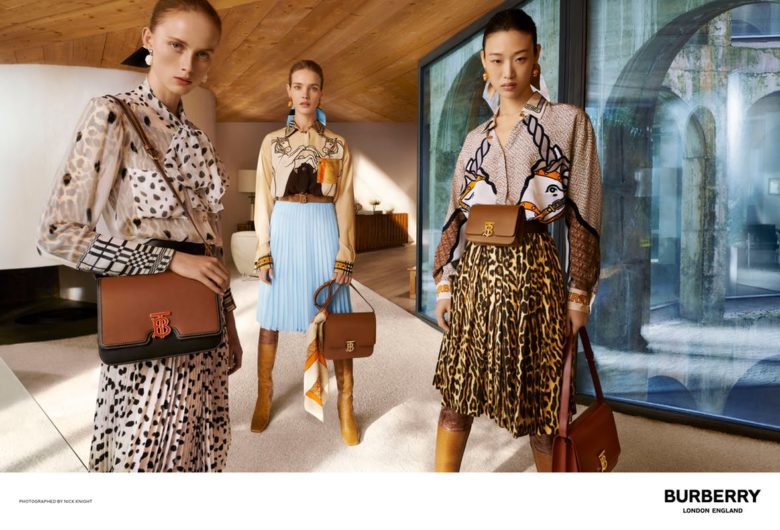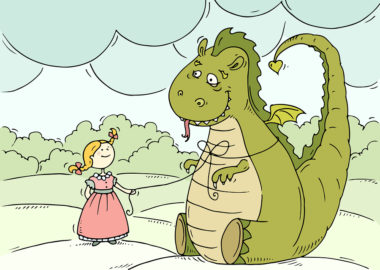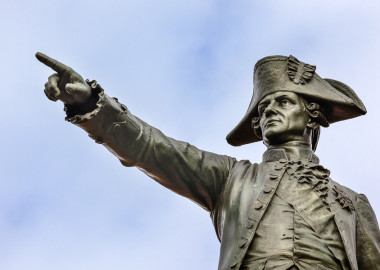
Much ink has been spilled, in print and otherwise, on Burberry’s comeback from what many branding experts thought was a mortal wound. In the 2000s, the brand became inextricably linked with “chav culture”, a pejorative stereotype of the British working class that sent sales plummeting. Burberry had been a brand for the country aristocrat; inextricably tied with genteel pursuits. When Burberry decided to turn things around, they didn’t try to go back to the country house. They capitalized on their history to rebrand—and tell a new brand story—as a fashion-forward, upscale and glamorous brand that epitomized contemporary Britain.
Burberry always had a sharp eye for marketing. Its’ founder, Thomas Burberry, worked hard to ensure that Victorian luminaries like Robert Baden-Powell wore Burberry gabardine weatherproofs. Burberry outfitted several explorers and daredevils, outfitting Ernest Shackleton’s Antarctic expedition. With the arrival of the First World War, Burberry outfitted British troops in a garment that was christened the “trench coat”.
Now firmly associated with the well-heeled outdoorsy set, the brand was assured of a posh, albeit staid, clientele. Burberry adopted a logo of a knight with the Latin motto “Prorsum”, meaning “forwards”.

As in many branding missteps, it had begun innocently enough. In 2001, they had hired the gifted Christopher Bailey away from Gucci’s womenswear division. Bailey had been key to injecting sex appeal into a conservative brand, making Kate Moss the face of Burberry. Burberry was suddenly, and unexpectedly, cool.
Looking to capitalize on their success, Burberry extensively licensed their products. It provided a cash injection, but opened the door to downmarket imitation. When Angela Ahrendts took over in 2008, the brand was in trouble.

Ahrendts said that one of her first jobs was to take back control of Burberry’s intellectual property. However, simply removing the chequer patterned fabric from dog beds wasn’t sufficient; Burberry needed a new story, and like all great storytellers, they started by understanding their audience. Burberry’s customers were now increasingly based overseas, with exploding demand in China. In order to take back their brand, they simply couldn’t turn back the clock. They needed to tell their story how they were moving forward, but in an authentic way that took the best aspects of the existing brand identity with them.
So, how did Burberry turn things around?
They embraced innovation.
Bailey cites Apple as the brand that inspires his conception of Burberry. Bailey, with Ahrendts’ support, moved Burberry aggressively into the digital space at a time when many design houses saw elaborate websites as liabilities. This sparked innovation. As the Telegraph reported:
Burberry embraced social media, livestreaming of fashion shows and digital engagement with consumers. The content that was generated energized rebranding efforts by showing Burberry in an aspirational context. Burberry even redesigned its Regent street store to reflect the burberry.com website, providing a seamless experience from digital to retail.
Their digital prowess became so admired that Ahrendts was eventually lured away from Burberry by Apple itself.
Brand content stuck close to key brand principles.
At Burberry’s website, history was lovingly curated with images in a mobile-friendly setup. To move confidently into the digital sphere, you need content. Kept scrupulously up-to-date, the timeline connected Burberry’s current campaigns with the highlights of the company’s past. Although the house chequer was limited to less than 10% of products, it still peeked out under shirt collars in advertising. Burberry’s contemporary marketing efforts were decidedly upmarket, using aristocratic models in the English countryside shot by Mario Testino. It was a fresh and irreverent throwback to their original fusty image that still emphasized Burberry’s sophisticated side.

Carefully curating their corporate history allowed Burberry to draw a clean line from their past exploits to their forward-thinking approach today. It brought the brand respectability and a sense of adventure. They also embraced their “Britishness”, employing young British actors, musicians and models and bringing their runway shows to London from Italy. Exploiting their history reinforced their brand alignment, but also underlined that they understood what they did well.
They were confident in their creative vision.
Burberry had reached an impasse with their brand not only because of their downmarket associations, but because they had not evolved their brand for some time prior to Bailey’s hiring. For all brands, creativity and evolution will continually refresh their brand. Ahrendts and Bailey agreed on a creative vision that leveraged the best of Burberry’s history, but was resolutely contemporary.
Their Latin motto, Prorsum (forward), seems ever more appropriate as Burberry, the brand, moves with audacity.
When even the Daily Mail is busy writing your obituary, it’s hard to feel confident. Burberry was successful in rebranding itself because it was determined to start fresh. That’s not to say that they jettisoned everything of their history. Instead, they leveraged it, moving to become a fashion powerhouse that finally began to be spoken of in terms of innovation and style. Their Latin motto, Prorsum (forward), seems ever more appropriate as Burberry, the brand, moves with audacity.

Even if you’re not passionate about high fashion, there is much to learn by following Burberry’s brand story refresh. A high level of comfort with innovation allowed rebranding to stretch beyond shaking off uncomfortable perceptions to become truly forward-facing.
Want more?
Read about how fashion brands leverage their archives on social media, or read ECHO Storytelling Agency founder Samantha Reynolds’ take on why authenticity is the Holy Grail for your brand.
Got a case of fuzzy brand story? Get started with these 7 Storytelling Resources You Need to Clarify Your Brand Story, learn more about our Brand Story Consulting services, or get in touch by email at hello@echostories.com or by phone at 1-877-777-3246, and we’ll be more than happy to help.





